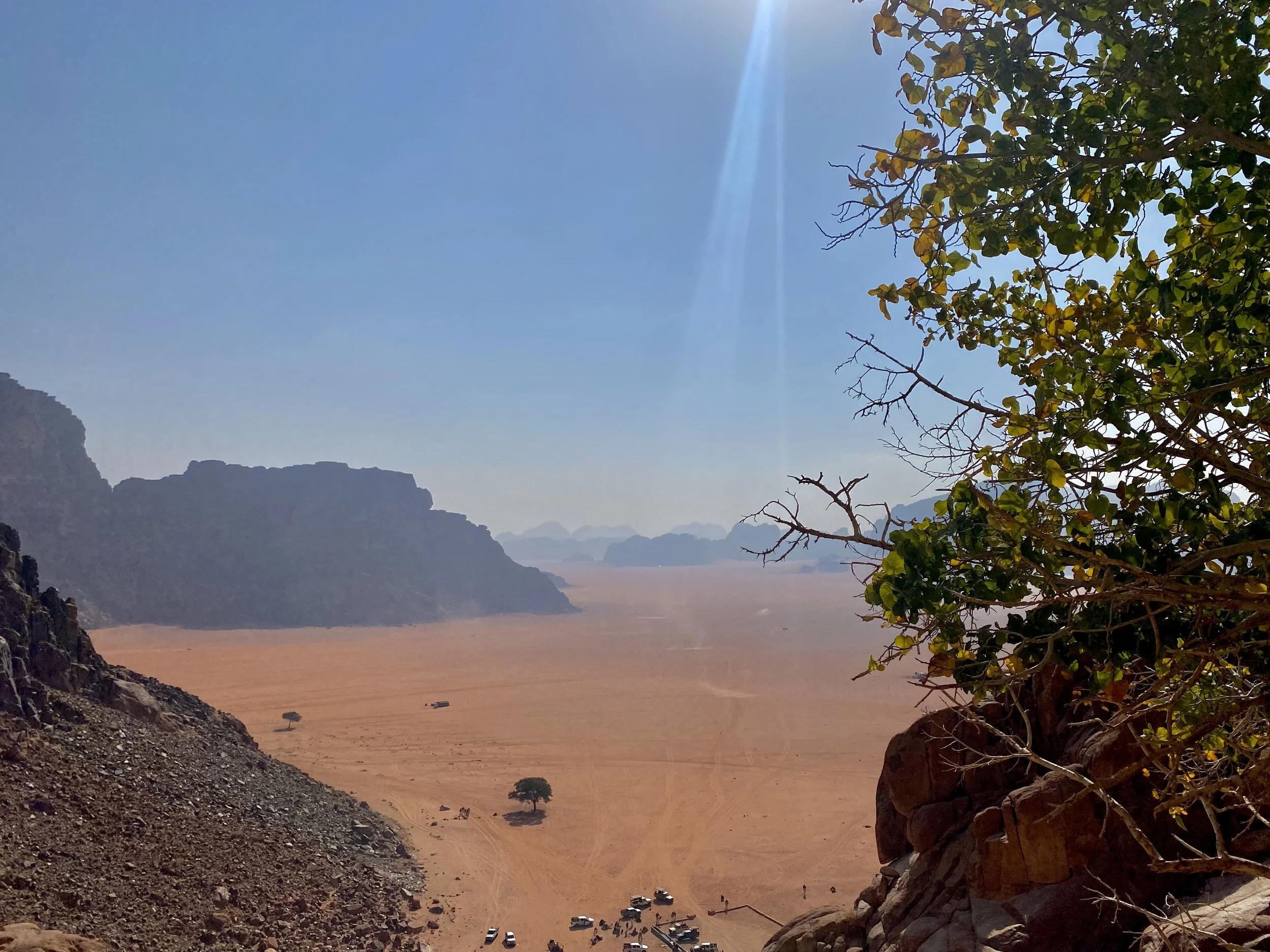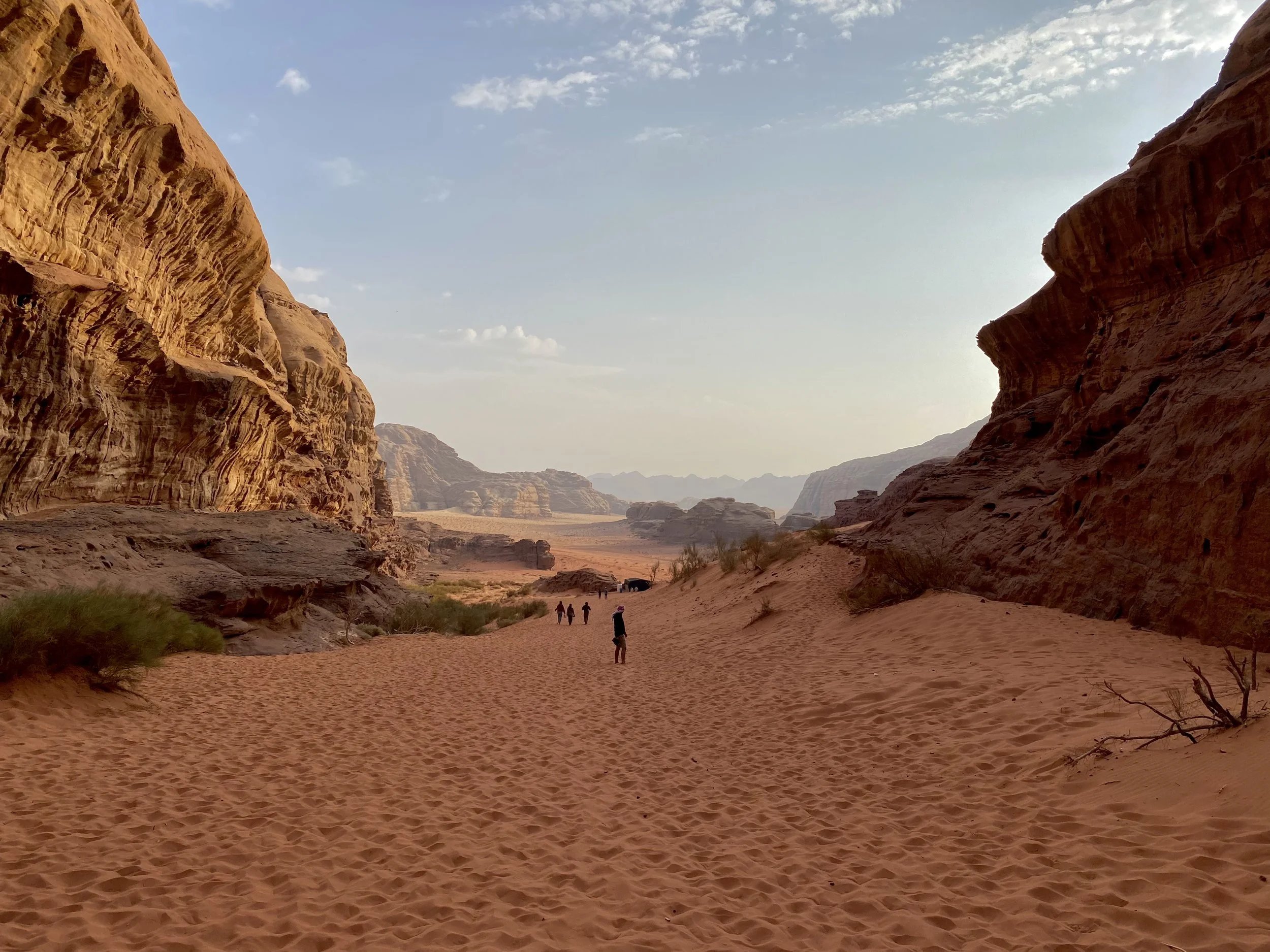Wadi Rum is Mars on Earth
A Surreal Landscape with Preserved Bedouin Life
Wadi Rum, the largest desert in Jordan, was originally made famous by (the movie) Lawrence of Arabia - and has since been used in movies from The Martian to Star Wars. The desert is characterized by its red sand and granite rock formations - which together have garnered it the nickname Mars on Earth. The area is surreally beautiful - and just a spectacular place to spend a few days.
I think part of what makes a trip to Wadi Rum so spectacular is that the land is still managed by the Bedouin natives. When you visit, you will stay at a Bedouin camp - which is essentially a glamping experience. You’ll eat Bedouin meals, experience Bedouin hospitality, and be shown around by a family who has lived in the desert for generations.
There are a ton of camps to choose from in Wadi Rum - so it can be stressful to pick one. They’re all run by the same family, though, so you’ll have a fairly consistent experience wherever you choose. If you want a busier, more energetic camp experience, try Wadi Rum Fire Camp or Wadi Rum Caravan Camp. Many of the other camps are smaller, so you’ll have a more private, quiet experience. I myself went with Desert Bird Camp - which was quiet and lovely. Expect one night with a full day jeep tour and all meals to run between 50 and 60 Jordanian Dollars, and two nights to run between 60 and 80. I recommend booking through WhatsApp to get a package deal instead of booking through a website.
It can also be stressful to plan how to get to your camp - but rest assured it’s not that difficult. If you buy a package deal, someone from the camp will come to Wadi Rum Village to pick you up (and drop you back off at the village). You can take buses or taxis to / from the Wadi Rum village. Just make sure you have a way of reaching out to the camp (probably a WhatsApp contact) when you arrive at the village - which will have WiFi. Most likely, your taxi driver or bus driver will help make sure you’re picked up.
I recommend spending at least two nights in Wadi Rum so you have time to savor the sights, to relax, and to explore on your own. I seriously considered staying a third night - but decided to last minute to leave on a high note because I happened to experience a (very rare) storm on my second night. I very much doubt I would have regretted the third night, though.
Go For a Hike
It’s easy to go on a hike in Wadi Rum - though you’ll only be able to hit a couple of the main sights near your camp. I recommend downloading offline maps on maps.me because it has the hiking routes - which generally have more compact sand and are easier to walk along. Pick a destination or two near your camp - and try to stay within a few miles of your home base. If you find yourself in doubt, just follow the driving paths of the jeeps - which largely mirror the hiking routes. (And if you’re really lost, just ask one of the drivers for help.)
The benefit of hiking is you get to really stop and savor sights as you go. I took my time and sat for at least an hour multiple times throughout my hiking day. The scenery is so exquisite that it deserves the time to be experienced slowly.
Take a Jeep Tour
But Wadi Rum also deserves to be experienced fast and wild - which is best done on one of the classic Jeep tours arranged by your camp. All day, you’ll ride in the back of a pickup truck (often going extremely fast for the off-road conditions) and stop at some of the best sights throughout the desert. Prepare for a day of climbing up the granite cliffs to find exquisite views of the desert.
Plan Your Spot for the Sunset
On the day of your jeep tour, you’ll be brought to a spot to watch the sunset. If you have more than one day, though, I recommend planning where you want to watch the sunset on your own. Pick a rock that you can climb up with reasonably unobstructed views - and head there about 30 minutes before sunset to catch all of the colors. You’re unlikely to be disappointed.
Stargaze
And after your dinner, don’t forget to lie out on the sand and look up at the stars. Wadi Rum has very little light pollution - so when the cloud coverage is low, you’ll even be able to see the Milky Way. Especially if you grew up in an area with lots of light pollution, prepare to be wowed.







